|
Birch Wood Silver Birch leaves Downy Birch leaves Of withered trunk fair haired the birch. Faded trunk and fair hair. Browed beauty worthy of pursuit. Most silver of skin. Book of Ballymote 1391 Birch Fact File Betula pendula, Silver Birch Betula pubescens, Downy Birch. Betula nana, Dwarf birch Mature birchwood is often a light airy place supporting a myriad of many types of fungi (beech wood is also beneficial for fungus). It casts little shade and one can often observe redpolls and tits flitting and feeding amongst the canopy. These birds will use the seed as a food source. The leaves are a food source for the mottled umber caterpillar moth. There are two classes of flora: 1. Blaeberry (Vaccinium mrytillus) rich birchwoods. 2. Herb-rich birchwoods with a grassy floor. Birch often grows on acid soils ( with a preference for lighter soils) and interestingly birch actually deacidifies the soil as not only are its leaves rich in nitrogen, thereby enriching the soil, but also in calcium therefore carrying out the former process. Birch will grow amongst other woodland types in clearings as it is an effective coloniser. It will also grow on the edges of woods wherever an opportunity arises. Its role in ancient natural history is as a first coloniser giving way to other species of tree in the process known as natural succession where the final species to dominate a given site is known as the Climax Species. However birch wood can be surprisingly persistent and is the natural climax species in the highlands of Scotland. Pollen from Loch Maree confirms continuous birch regeneration for the past 9,000 years! Further south in England we have a wood called ‘Birkland’ in Sherwood forest which name implies the Vikings recognised it as a birch wood over a thousand years ago. There are two main species of birch in Britain and a third species specialist to the Scottish Highlands. 1/ Betula pendula, Silver Birch 2/ Betula pubescens, Downy Birch. 3 / Betula nana, Dwarf birch (specialist species of the Scottish Highlands). The main two birches were formally recognised and published in 1791. The Downy Birch is more associated with ancient woodlands, has stiffer twigs which do not droop (better for brooms) and leaves which have less ragged teeth and are hairy on the underside with a triangular base. The Silver Birch is more associated with wood pasture and is more useful for timber due to a more cylindrical trunk. Its branches droop and its leaves have a straight base and are not hairy. In Scotland and in other parts of Britain birch has many uses. Commercially it was used for reels and bobbins as well as the commonest fuel used for the ironworks in the weald. Locally its bark was used for roofing and making shampoo. Birch is the tree of new beginnings representing the qualities of inception. She has a dynamic, gentle, yet strong energy to help build and visualise a new way of being, the start of your journey into the inner worlds or the decision to commit more fully to your self-development. Birch is associated with births, initiations, the spring and love. The deities that work with those qualities through birch are in Wales Arianrhodd and Gwyndion; Diarmid and Grainnah in Ireland; Frigga in Norway and the Anglo-Saxon Goddesses of Spring Eostre. The Ogham name Beithe means being or a being and the Birch Grove is a place to connect with other-wordly visitors. This connection is further enhanced as it is said to be the first Ogham inscription that was written to warn Lugh Lamfada that his wife was being taken to faerie land. Herbal remedies. Birch sap collected in March can be used for kidney/bladder stones and rheumatic diseases as well as for a cleansing mouthwash and is excellent for the skin. Birch bark can be used as a diuretic, antiseptic and anaesthetic enabling nerve endings to lose sensations and relieve muscle pain. Poetry of Birch. Ancient tundra birch-dominated, Solitude of creation, giving birth. Naturally regenerates over thousands of years, In the coldest of places, gentle strength perseveres. Silver her bark, black are her branches, A spring Goddess as she advances. Famine power, persistent strength Like Spring unfolding without relent. O Birch, you teach us to be gentle when we fall, May our hearts remain open and kind to all. Learn more by subscribing to our newsletter Here.
0 Comments
Aspen Populus tremula ( Latin) Eadhadh (Gaelic Ogham) Aspris (Greek)
Black poplar Populus nigra White poplar P.alba Horrible grief, test tree or Aspen. Distinguished man or wood. Kinsman to the Birch, Aspen. Additional name for a friend. Book of Ballymote 1391 The Ogham name Eadhadh is most commonly associated with the aspen which is our only native woodland poplar. In North America it one of the oldest living organisms in the world as the same root stock is producing new shoots as it has done since the last ice age. In this country (UK) I have visited several aspen woodlands that have probably been created by one rootstock. In Utah (USA) one single aspen is thought to cover an area of 106 acres! In the British Isles however, the tree as an individual trunk only lasts 50-60 years before succumbing to heart rot. Its root system can live for much longer but is easily killed by other tree competitors as aspen is shade intolerant. This tree has a history therefore of benefitting from human interference as it grows well in a coppiced wood and especially when deer eat other tree species which would have otherwise suppressed it. Due to modern practices of planting and neglect the aspen is now in decline. Aspen does not easily reproduce from seed as the seed has to germinate within a week and needs to be exposed to prolonged immersion in water. The suckers it produces do vary and some experts claim to be able to tell the difference between male and female trees. One notable variation is the ‘giant aspen’ which grows in Suffolk and Essex to a much larger size than the usual species. Although Aspen will grow happily in wet soils that do not drain such as clay, it has been shown to deal more effectively with drought than ash or birch in the dry summers of 1975-6. It seems to avoid habitats where there is water movement such as plateau or valley alder woods, preferring more stagnant water habitats. Aspen is a tree of cold climates and with birch and sallow was one of the first trees to colonise Britain after the last ice age. Aspen has soft white wood which perishes easily and is poor building timber. Although ignored by the modern forester there are a surprising amount of references to it in medieval documents maybe due to the fact it grows well in coppice woods, and all timbers at that time were put to use. It was considered to be one of three non-coniferous softwoods (alder and black poplar being the other two), and therefore sometimes incorporated into building structures such as homes and windmills. As a specialist wood it can be used for carving and sculpture but was traditionally used for arrow shafts and clogs. In fact authorities were actively encouraging its use for arrow shafts in the 1400s due to a plentiful supply. Aspley Guise (Beds) and Stonham Aspal (Suffolk) are places named after the aspen and may indicate the tree was more common outside of a woodland habitat than it is today. Eadhadh , the Gaelic name for aspen, can be translated as ‘most buoyant of woods’ and indicates its use for the making of oars and paddles. Aspen flowers before it comes into leaf and is wind- pollinated. Aspen is known as the trembling tree ( P.tremula) and Christian lore states that the tree shudders at the thought that its wood was used for the crucifix. Other traditions equate the movement of its leaves ( due to its long flat leaf stalks) to speech and language. Some would say it is whispering or communicating with spirit or it can hear from afar and is stirred by what it hears. The tree therefore can be seen as an entrance to Other-worlds and used for divination. In the ancient Celtic system of the Ogham it speaks of the tree as the Test Tree and a later common phrase ‘to tremble like an aspen’ could be related to this. To face fears and highlight your weaknesses takes great strength, are you prepared to tremble like an aspen to move on in your life? Oscar, a Celtic warrior from Irish literature, had to kill the High King against impossible odds to protect his kinsman. He is likened to an aspen and described as ‘no way daunted despite terrible injury’. In our own lives the fear is more likely to be standing up to what we believe in or being ourselves no matter what the outcome. Are you prepared to face loneliness, humiliation or loss of material wealth to be true to yourself? Shields have also been made from this tree and the Greek word for aspen (aspris) means ‘wood to make shields’ reminding us of its connection to warriors and going forth. This tree can therefore help us find the courage to face our fears as well as testing us before moving on. Aspen is the knowledge that you are never too advanced to feel fear and shake with grief. This is the realisation that will take you to a place of protection and an advancement of knowledge. Our other native poplar is the black poplar (P.nigra) referred to in Medieval documents as ‘popeler’. It is a large non-woodland tree and once one of the most common farmland trees in Eastern England. It is now rare and only occasionally seen. The black poplar has distinctive rugged boughs once used to make cruck frames. These are curved timbers used to hold up roofs especially in medieval barns. The black poplar stands, a black outline against the sky with large heavy curved branches sweeping down to the ground, oozing sap known as balsam indicative of the Goddess of Death. When a new tree was planted at docking time a lamb’s tail was buried under it as a gift to the Goddess. Ointments can be made from the buds of this tree to treat bruises, inflammations and gout. The sap or balsam from the tree can be used as incense. The last poplar tree I would like to mention is the white poplar ( P.alba). It stands in stark contrast to the black poplar with its wonderful silvery downy leaves which flutter in the wind that cannot fail to uplift one’s spirits. Like white willow this is the species most commonly associated with witches, especially medieval French witches. There is a debate as to whether this tree is a native to Britain. Often thought to have been introduced to this country in the 1600s. It is referred to in documents dating from 1200-1300 as ‘abel’. Whether it is an early introduction or a true native we may never know. This tree has a leaf with 5 points symbolic of witches and is said that the balsam was used to help witches fly at night when rubbed onto their bodies. The white leaves are said to move you into a trance, give the gift of eloquence when placed under the tongue and connect the tree to the moon. Its distinctive white bark can be used to make a rather pleasant tea which is used for pain relief. To receive our monthly newsletter packed with even more information on tree, plants and British traditions please subscribe HERE. Heather (Calluna vulgaris) Bell heather ( Erica cinerea) Cross-leaved ( E.tetralix)
To see the heath-flower withered on the hill, To listen to the woods expiring lay, To note the red leaf shivering on the spray, To mark the last bright tints the mountain stain, On the waste fields to trace the gleaner's way, And moralise on mortal joy and pain, Sir Walter Scott Qualities of Heather Ur that is Heath. Terrible tribe in cold dwellings, mould of the earth, Heath. Completion of lifelessness, the grave. Growing of plants. Book of Ballymote 1391 Heather Fact File Heather (Calluna vulgaris) Bell heather ( Erica cinerea) Cross-leaved ( E.tetralix) Ur (Gaelic/Ogham name) Heather- clad moors lift the spirits and speak of a unhindered freedom, of true love and of the soil and earth which it hugs with a protective embrace. Ur, the ogham name for heather is associated with the soil and the earth, confirming the heather’s relationship with the earth as its stems root into it forming a natural bed. This has been used as an analogy in stories of lovers using the heather clad moor to lie upon as well as a practical usage as bedding in the past. To bed someone in older times was to make a lasting commitment, a meaningful relationship of unconditional love. In the great epic – the pursuit of Diarmaid and Grainne they finally embrace each other on a bed of heather collected by Diarmid. A Scottish ballad talks of a passion a women has for Black Jack Davy preferring to lie with him on heather-clad moors as opposed to a comfortable bed at home. King Henry in a folk song beds a hideous hag on the green heather to be greeted by a fair woman of beauty the following morning. This is an age-old tradition of the King giving respect to all aspects of the sacred land no matter how beautiful or ugly. Ur can also mean ‘new’ which may point to an acceptance of death. In Scotland they speak of the white sleep- a dead person awaiting new life . As with the hideous hag, we see things turned around again when working with heather as death is seen as a new birth into another life and birth as a death to a previous life. Maybe this is why the Gaelic word for heather, ‘Fraoch’ means fierce or war-like as it is the warriors that risk death to return in glory into a new life in Celtic traditions. Fraoch is a famous Irish warrior whose wife Boand is daughter to Aoife and Chulainn who are both legendary warriors of high repute. Fraoch heather ale is probably the oldest style of ale brewed in the world, brewed since 2000BC in Scotland. Calluna vulgaris is the most common of the three heathers mentioned above. The word Calluna comes from the greek meaning ‘ to brush’ and this species is ideal to make brushes and brooms and is also the heather most commonly referred to as ling. Ling comes from the Anglo-Saxon word lig meaning fire, and therefore reminds us of its use especially in Scotland for a fuel. In fact in Scotland the word 'ling' refers to any rush or coarse grass growing on the heath. This heather has purple flowers which are occasionally white. Heather flowers are a great source of nectar for bees producing prize honey. The red grouse will feed upon the young shoots and the birds will feast upon its seed. The bell heather is the main species cultivated for garden use, a much shrubbier habit with bright bell like flowers. The cross-leaved heather is very similar but grows in wetter areas and its leaves are borne in fours (tetralix incorporates the greek word for four) as opposed to three borne by the bell heather. These whorls of four leaves form a cross when looked down upon and also fold down to conserve moisture by lessening evaporation. Heather has been used to make robe and thatch as well as brooms and brushes and strong ale. Medicinally it is said to help ease the pain of migraine and menstruation. If you would like to learn more about the folklore of our flora subscribe to our free Newsletter HERE or enrol on a Tree Folklore course HERE Gorse Ulex europaeus
Old stone pits with veined ivy overhung, Wild crooked brooks o'er which is rudely flung A rail and a plank that bends beneath the tread, Old narrow lanes where trees meet overhead, Path-stiles on which a steeple we espy Peeping and stretching in the distant sky, And heaths o'erspread with furze-bloom's sunny shine Where wonder pauses to exclaim 'divine!' John Claire Qualities of Gorse Onn that is furze. Helper of horses, wheels of the chariot, wounding, whin. Strength of warriors, fierceness. Gentlest of work. Book of Ballymote 1391 Gorse Ulex europaeus (Latin) Onn (Gaelic/Ogham) Whin/Furze (Folk names) 'While gorse is in flower, Britain will not be conquered’ Gorse is a common sight on British heathlands growing well on those acid sandy soils near the coast as well as further inland. The above saying may well be true, for to not have gorse in flower would be a sad day for Britain as there is always gorse somewhere with flower upon it. These extremely prickly bushes have bright yellow flowers which exude a wonderful fragrance and on a calm summer’s day you can hear the ripe pods bursting. There are so many reasons to praise that which is common. I could not sing the praises of Gorse more eloquently than John Claire in the opening poem above: And heaths o'erspread with furze-bloom's sunny shine Where wonder pauses to exclaim 'divine!' Our heaths are often known as commons and in the South of England we are blessed with a unique survivor of the common law system and the supreme place for lichen in Europe, the New Forest. The New Forest is a perfect place to experience what Wordsworth calls 'The harvest of a quiet eye'. In common things that round us lie, Some random truths he can impart, The harvest of a quiet eye That broods and sleeps on his own heart. Wordsworth Gorse supports a wonderful array of heathland birds, its sharp spines protecting the nests of linnets, whinchats, stonechats and the now rare Dartford warbler. This protective uplifting side to gorse is reflected in traditional stories of golden-haired women such Eithir and Niamh who will whisk you off into fair lands where nothing fades but glimmers with a golden sheen. This may also be true of the powerful Goddess Adraste who Boudicca is said to have called upon to fight the Romans as she is a strong-willed , battle- ready, golden haired war Goddess! Gorse calls us to destroy that which no longer serves and to start again from scratch just like the practice of burning heathland to regenerate new growth. Gorse challenges all pre-conceptions and promotes the concept of complete freedom. You now have the choice to stay under the protective shade of Pine or move out into the open and confront your fears! The flowers in decoction can help jaundice, kidney stones and other obstructions. If you would like to learn more about our British Flora please subscribe to our monthly newsletter HERE |
Details
Poetry of flowersJoin me to explore the flora of the British Isles on this blog. My intention is to attempt to capture the unique quality and beauty of each species of flower, tree or shrub. For every species featured I will be growing many more wildflowers to celebrate the joy of their existence, their intrinsic conservation value and bewildering array of uses. For nearly 30 years I have noted, studied and explored wildflowers in the field much to the patience of the walker beside me. To share this passion is a heartfelt plea to respect, preserve and care for all British Wildflowers no matter how common they seem. Archives
February 2024
Categories |

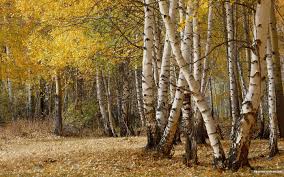

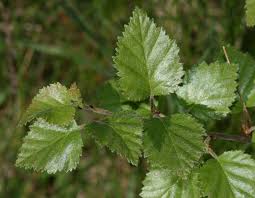
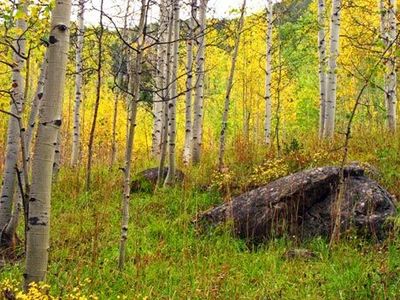

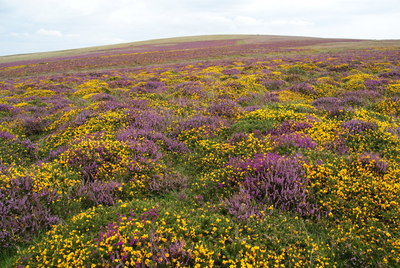
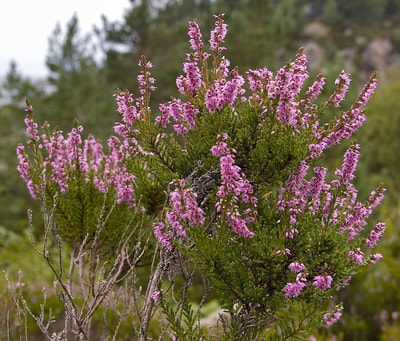
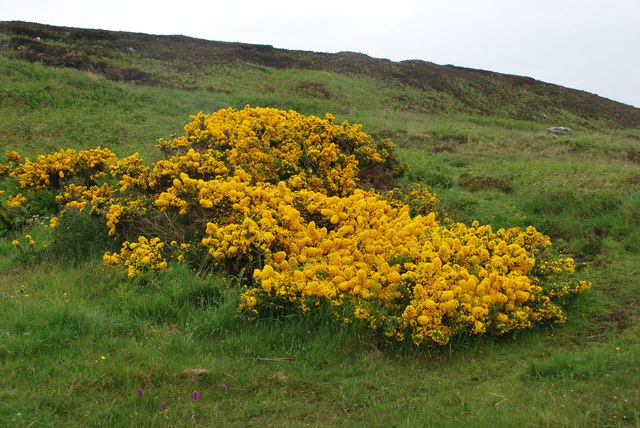
 RSS Feed
RSS Feed
